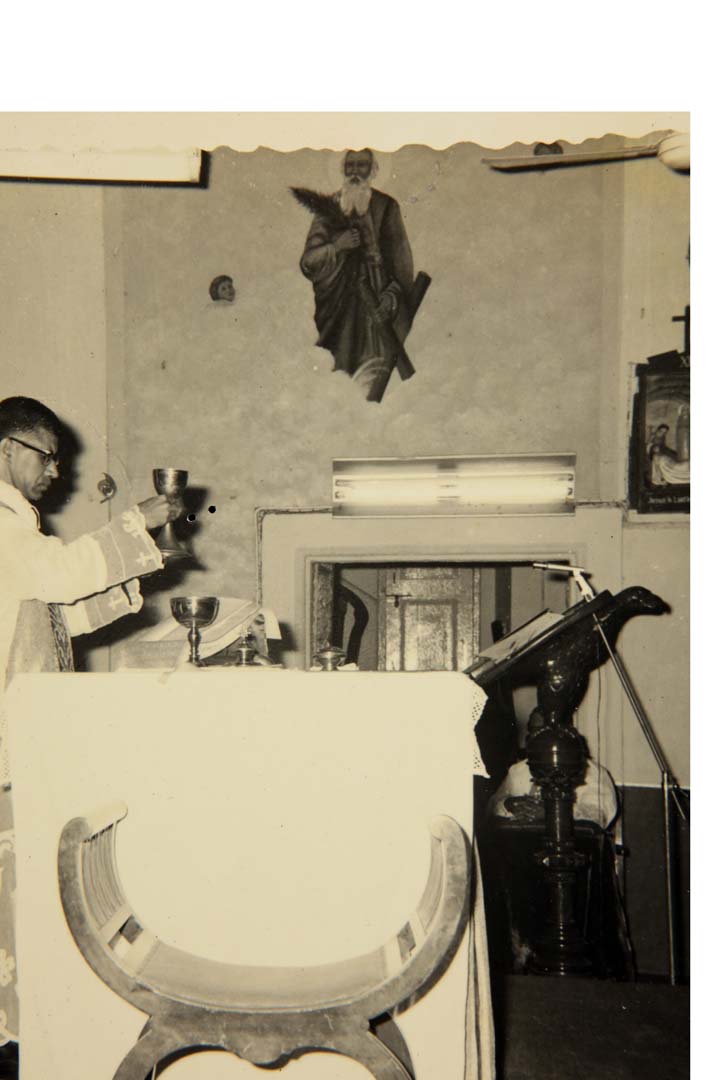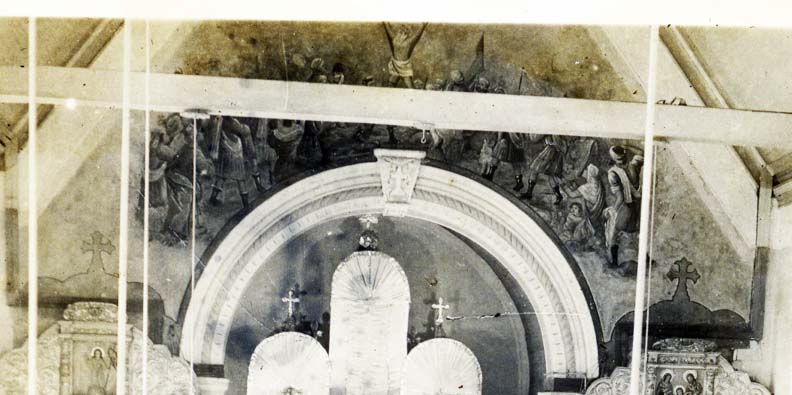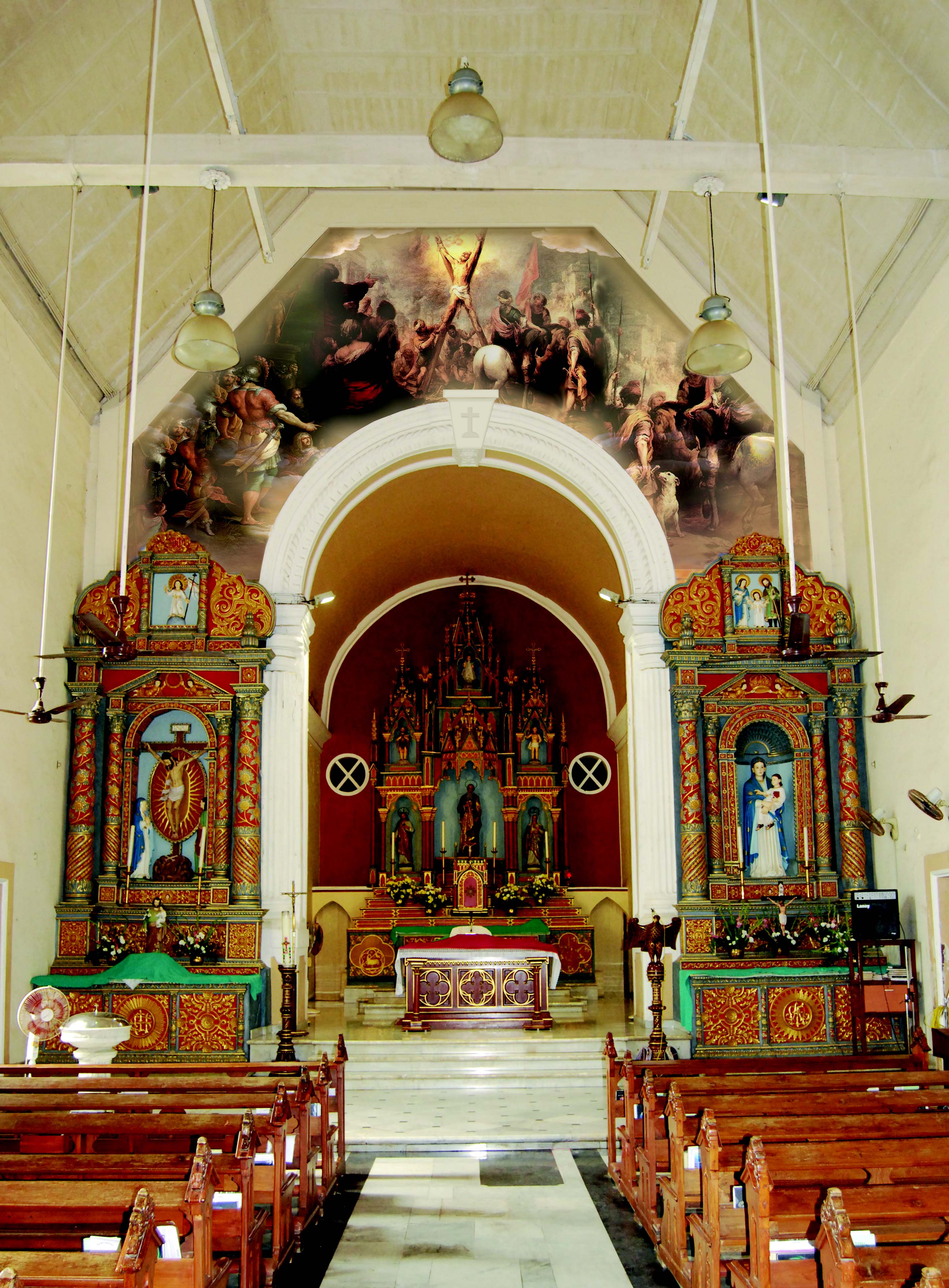The Church Murals
There were murals painted on two side walls of the church, another on the sanctuary arch and one on the dome of the sanctuary.
The church brochure of 1966 describes them thus:
“On the domed sanctuary ceiling 50 feet above floor level is a representation of God the Father.
The ones on the side walls, near the side-altars, depicted St Andrew and two other fishermen on the shores of the Sea of Galilee listening to the words of Christ, “Come follow me” and on the opposite wall, the scene of St Andrew with a miniature of the cross on which he was crucified. (photo, left) The scene depicting the crucifixion of St Andrew with the attendant crowd covers the arch of the sanctuary.” (photo, below)
There is no record of who painted them, or when they were painted. These murals were painted over sometime in the 1970s or 1980s.


“Martrydom of St Andrew” : Bartolome Esteban Murillo, 1617-1682 A masterpiece distinguished by its complexity yet spontaneity of composition, its depth and luminosity of coloring. The foreground is balanced by two groups. On the right are Roman soldiers.
The commanding officer and the standard bearer are mounted, the officer on a white horse, which is a conspicious figure in the group and vigorously rounds it off toward the middle of the foreground. Another strong note of interest is the mounted standard bearer, who holds aloft the old Roman standard, Venetian red and with the wings. The left corner of the foreground is filled with women and men, all of them deeply affected, one of the women weeping. The martyrdom takes place in the middle distance behind which a line of spectators closes up the composition, while suggestions of Roman structures in the distance give an added sense of largeness and solidity to the design.
